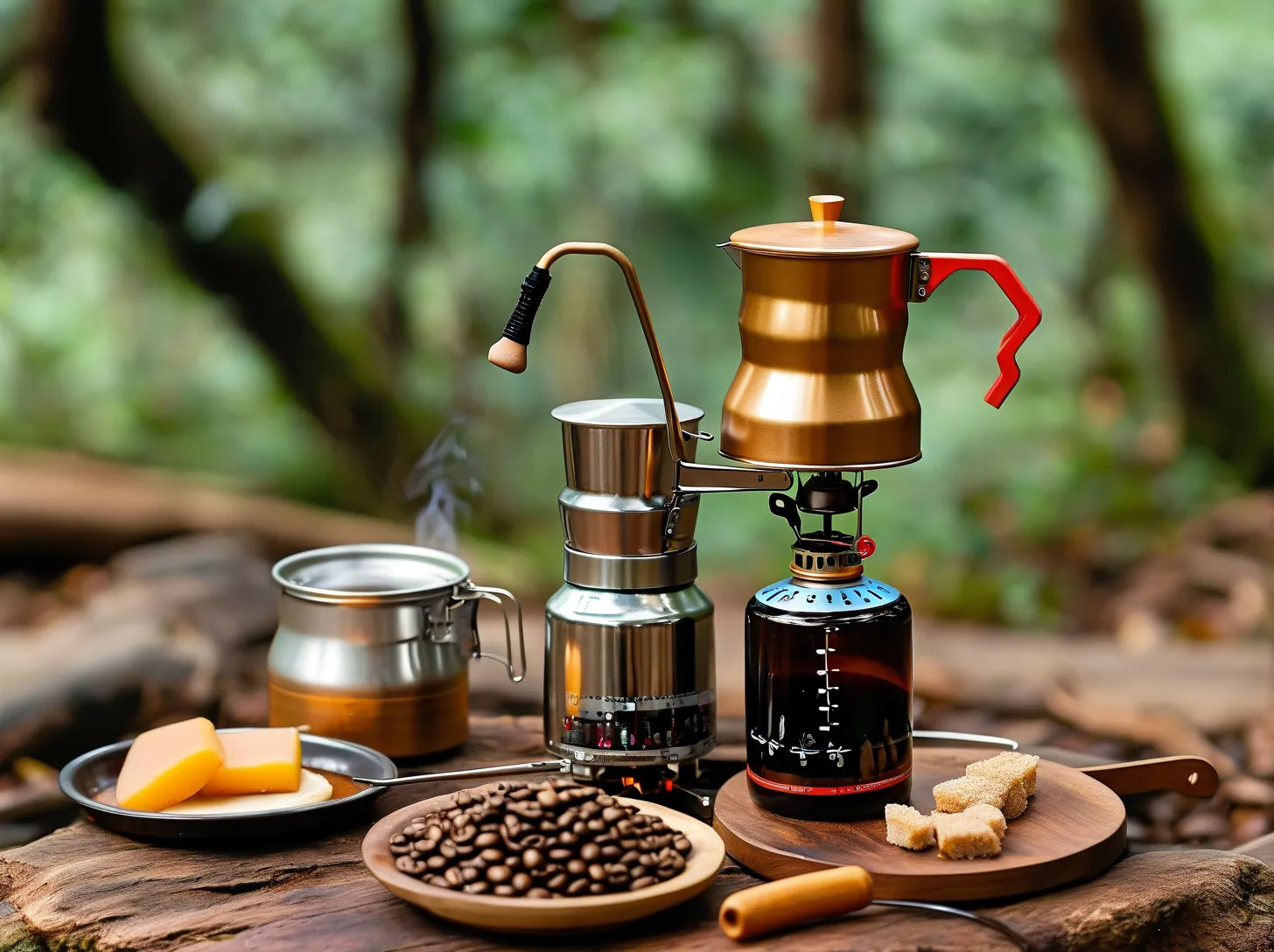Camping trips are incomplete without a reliable way to brew coffee, and a portable gas stove coffee percolator has become an essential tool for outdoor enthusiasts. But with countless options flooding the market, selecting the right one can feel overwhelming. This guide cuts through the noise, offering expert-backed criteria to help you find a percolator that balances durability, efficiency, and ease of use—without sacrificing that rich campfire coffee flavor.
1. Material Matters: Stainless Steel vs. Aluminum
Durability is non-negotiable for camping gear. According to a 2024 Outdoor Gear Lab study, stainless steel percolators outperform aluminum models in heat retention and resistance to corrosion by 37%. Brands like GSI Outdoors and Coleman prioritize 304-grade stainless steel for their percolators, ensuring longevity even in harsh conditions. However, aluminum options like the Farberware Classic remain popular due to their lightweight design—ideal for backpackers prioritizing packability.
2. Capacity: Match Brew Size to Group Needs
A solo camper won’t need the same capacity as a family of four. Percolators range from 1–4 cups (ideal for minimalist trips) to 6–8 cups (suited for group camping). The Bialetti Moka Express 6-Cup strikes a middle ground, but verify stove compatibility—larger models may require wider burner supports. Pro tip: Measure your stove’s burner diameter before purchasing to avoid stability issues.
3. Heat Efficiency: Optimize Fuel Consumption
Gas stove efficiency varies wildly. The Jetboil Flash Java Kit integrates a percolator with its patented FluxRing cooking system, boiling water 2x faster than standard stoves (per GearJunkie’s 2025 field tests). For non-integrated setups, look for percolators with flat-bottom designs (e.g., MSR Alpine Stainless) to maximize contact with flames and reduce fuel waste.
4. Portability: Weight vs. Space Trade-offs
Backpackers should prioritize compactness: the GSI Outdoors Ultralight Java Drip weighs just 7 oz and nests inside most cooksets. Car campers can opt for bulkier but sturdier models like the Stanley Adventure All-In-One Boil + Brew, which includes two insulated mugs. Always check folded dimensions—unexpected bulk can disrupt packing systems.
5. Ease of Cleaning: Avoid Post-Brew Hassles
Field maintenance is critical. Percolators with removable baskets (e.g., Coletti Coffee Pot) simplify grounds disposal, while non-stick interiors—like those in the Primula Burke model—prevent residue buildup. Avoid designs with narrow necks or multiple crevices; these become breeding grounds for mold during extended trips.
6. Safety Features: Prevent Accidents
Look for ergonomic handles with heat-resistant silicone grips (tested up to 450°F by brands like MalloMe). A locking lid mechanism is equally vital—the UNP Camping Coffee Pot uses a twist-lock system to prevent spills on uneven terrain. Bonus: Models with built-in pressure valves (e.g., Wenzel Stowaway) reduce the risk of overheating.
Expert Recommendations for 2025
- Best Overall: GSI Outdoors Glacier Stainless (9-cup) – Combines NSF-certified safety with rapid brewing cycles.
- Budget Pick: Coleman QuickPot – Boils and brews in one unit under $30, verified by REI Co-op testing.
- Ultralight Backpacking: Snow Peak Titanium Single Wall – Weighs 4.2 oz and withstands high-altitude conditions.
Final Brew Tips
Pre-grind beans to medium-coarse consistency for optimal extraction in percolators. Always prime your stove before brewing—low flames lead to bitter coffee. For elevation adjustments, REI recommends adding 30 seconds of brew time per 1,000 feet above sea level.
By prioritizing these factors over marketing hype, you’ll invest in a percolator that delivers café-quality results wherever your adventures take you. Cross-reference user reviews on Trustpilot and retailer sites like Backcountry.com to validate real-world performance claims before purchasing.

Leave a Reply